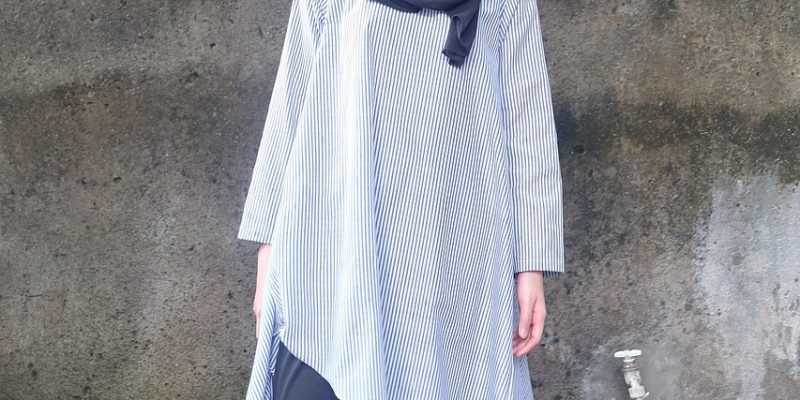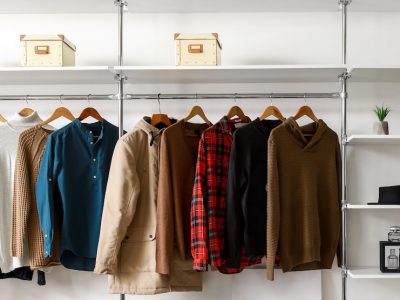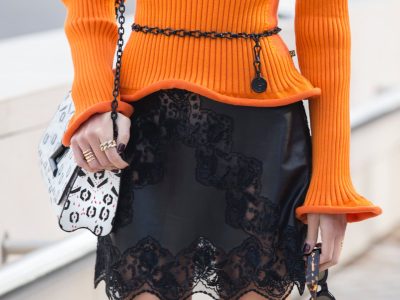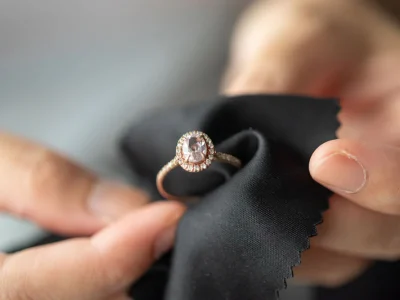In the realm of modern apparel, a significant debate rages on: fast fashion vs slow fashion. These two paradigms represent not just different business models but fundamentally divergent philosophies regarding consumerism, sustainability, and ethics in the fashion industry. As we navigate through an era increasingly conscious of its environmental footprint and social responsibility, understanding the nuances of this debate becomes paramount. This exploration aims to dissect the contrasting elements of fast and slow fashion, unraveling the complexities behind each approach and shedding light on their implications for the future of fashion.
Understanding Fast Fashion: A Quick-Fix Solution
Fast fashion operates under a model of speed and efficiency, quickly translating high-fashion design trends into items readily available to the mass market. Brands such as Zara and H&M have perfected this approach, leveraging sophisticated supply chains and cutting-edge technology to shorten the production cycle. This business model caters to the consumer’s craving for the newest styles at a fraction of the cost, making trendy clothing accessible to a broader audience.
However, this convenience comes with hidden consequences. The push for rapid production exacerbates issues related to the sustainability and ethical dimensions of manufacturing, from the overuse of synthetic fibers to questionable labor practices in factories worldwide. By focusing on the immediate gratification of consumers’ desires, fast fashion sidesteps the longer-term implications for both people and the planet.
Its success hinges on the relentless pace of collection turnovers, encouraging a throwaway culture where garments are viewed as disposable commodities rather than lasting investments. This approach has fundamentally altered consumer expectations and behavior, driving a cycle of consumption that prioritizes quantity over quality. Despite its appeal, the fast fashion paradigm raises critical questions about the future of the industry and its capacity to address the pressing environmental and social challenges it faces.
Slow Fashion: A Return to Mindfulness and Quality
Slow fashion emerges as the antithesis to the quick-paced world of fast fashion, championing principles of mindfulness in consumption and an unwavering commitment to quality. This movement promotes the idea of clothing as not merely transient items but as meaningful expressions of individuality and values. By prioritizing long-lasting design and ethical manufacturing, slow fashion brands like Patagonia and Eileen Fisher lead the charge towards a more sustainable and thoughtful approach to fashion.
They advocate for the use of organic and recycled materials, ensuring that each piece not only stands the test of time but also has a minimal impact on the environment. The slow fashion ethos encourages consumers to form a deeper connection with their wardrobe, selecting pieces that resonate with their personal style and ethical beliefs.
This paradigm shift away from impulsive purchases towards more intentional shopping has a profound effect, fostering a culture of appreciation for the craftsmanship and story behind each garment. In embracing slow fashion, consumers support a system that values the welfare of the planet and its inhabitants, paving the way for a more responsible and fulfilling fashion experience. Through this mindful approach, slow fashion not only addresses the pressing issues of waste and exploitation but also rekindles a sense of joy and purpose in the act of dressing, redefining luxury in terms of quality and sustainability.
The Environmental Impact: A Stark Contrast
The stark differences between fast fashion and slow fashion come into sharp relief when examining their environmental footprints. Fast fashion, characterized by its high-speed production and continuous output of new collections, contributes substantially to environmental degradation. The cycle of quick trend turnover necessitates the production of vast quantities of clothing, leading to significant waste. Each year, millions of tons of textiles end up in landfills, with fast fashion items, often made from non-biodegradable materials, representing a considerable portion of this waste.
Additionally, the production processes associated with fast fashion are resource-intensive, consuming large amounts of water and energy, and releasing a plethora of chemicals into ecosystems, further polluting water and soil.
Conversely, slow fashion takes a more measured approach, focusing on sustainability at every stage of the production process. This includes the careful selection of materials, favoring natural or recycled fibers that are less taxing on the environment. Slow fashion brands often implement more eco-friendly manufacturing processes as well, such as using less water and energy and opting for safer, less polluting dyes.
The emphasis on creating durable, timeless pieces also means that slow fashion items are less likely to be quickly discarded, reducing the amount of waste that ends up in landfills. By adopting practices that minimize environmental harm, slow fashion offers a model for the industry that prioritizes the health of our planet. Through these deliberate actions, slow fashion not only lessens the immediate environmental impact but also contributes to a more sustainable fashion ecosystem for future generations.
Ethical Considerations and Labor Practices
The ethical divide between fast and slow fashion highlights a critical aspect of the broader discussion. Fast fashion’s drive for cost reduction frequently leads to compromised labor conditions. Workers in this sector are often subject to dire circumstances, including hazardous work environments, insufficient wages, and, in some egregious cases, forced or child labor. The rapid production demand exacerbates these issues, as factories rush to meet tight deadlines at the lowest possible cost.
On the flip side, slow fashion represents a conscientious effort to elevate labor standards within the industry. By advocating for ethical sourcing and fair labor practices, this movement seeks to ensure that every individual in the supply chain is afforded dignity, fair compensation, and safe working conditions. This ethical commitment extends beyond the factory floor, aiming to cultivate a culture of respect and equity throughout the fashion ecosystem.
Furthermore, slow fashion brands often engage directly with artisan communities, supporting traditional craftsmanship and helping to preserve local industries. This engagement not only enriches the fashion landscape with diverse, culturally significant offerings but also provides a sustainable livelihood for artisans. By fostering these relationships, slow fashion contributes to a more inclusive and ethical industry, counteracting the exploitative tendencies of fast fashion.
In this context, the choices consumers make can have profound implications. Opting for brands that prioritize ethical practices empowers workers and challenges the status quo, urging the industry toward a more humane and equitable model. Through these conscious decisions, the dialogue around fashion shifts from mere aesthetics to encompass the values of fairness, dignity, and respect for all individuals involved in the creation of our clothing.
The Cost of Fashion: Price vs Value
The dialogue around the cost associated with fast versus slow fashion often hinges on initial outlay versus long-term value. At first glance, fast fashion appears to offer an unbeatable bargain, with its low-price tags and continuous flow of trend-driven pieces. This allure of affordability, however, masks the deeper expenses not reflected at the cash register.
The transient nature of fast fashion items, designed for the short term, necessitates frequent replacements, inadvertently leading to higher cumulative costs over time. This cycle not only strains the consumer’s wallet but also exacts a heavy toll on environmental resources and human dignity.
Conversely, slow fashion advocates for investing in quality and longevity, principles that echo a more sustainable and ethical approach to consumerism. While the initial cost of purchasing from slow fashion brands may be higher, the value derived from each garment extends far beyond its price tag. These pieces are crafted to endure, both in style and in substance, reducing the need for constant replacements.
This mindful approach to purchasing encourages a deeper appreciation for clothing, viewing each piece as an investment not just in personal style, but in a more equitable and sustainable future.
By reframing the cost conversation to include these broader implications, we move closer to understanding the true value embedded in our clothing choices. In this light, slow fashion offers a compelling proposition: paying more upfront for a garment that holds enduring appeal and ethical worth, presenting a stark contrast to the fleeting allure of fast fashion’s economical pricing. Through this lens, the decision between fast and slow fashion becomes not just a matter of price, but a reflection of values and long-term impact.
Consumer Behavior and Trends: A Shifting Landscape
The evolving dynamics between fast fashion and slow fashion are significantly influenced by changes in consumer behavior and emerging trends. As individuals become more attuned to the consequences of their purchasing decisions, there is a noticeable pivot towards practices that favor environmental stewardship and ethical responsibility. This shift is evident in the growing popularity of sustainable fashion, the resurgence of second-hand markets, and the strategic adoption of capsule wardrobes designed to minimize waste and maximize utility.
This transformation in consumer priorities marks a critical departure from traditional buying patterns, characterized by impulsive and trend-driven purchases. The modern shopper is increasingly seeking authenticity and transparency, valuing brands that provide clear insights into their manufacturing processes and ethical standards. This heightened consciousness is fostering a more discerning clientele, one that is willing to invest in quality over quantity and to support initiatives that contribute positively to society and the environment.
Moreover, the digital age has ushered in an era of unprecedented access to information, enabling consumers to research and advocate for sustainable practices and fair labor conditions. Social media platforms serve as potent tools for education and activism, amplifying messages about the impacts of fast fashion and galvanizing support for slow fashion alternatives. Through these channels, consumers are not only becoming more informed but are also exerting influence on the fashion industry, urging brands to adopt more responsible practices.
The transition towards more sustainable and ethical consumption patterns reflects a broader cultural shift towards mindfulness and intentional living. As this trend continues to gain momentum, it underscores the pivotal role of consumers in shaping the future of fashion, steering the industry towards a more sustainable and conscientious path.
The Future of Fashion: Embracing Sustainability
The trajectory of fashion’s future is deeply intertwined with sustainable practices, offering an opportunity to align our sartorial desires with the well-being of the planet. The conversation pivots around not just the adoption of slow fashion ideals but the broader integration of sustainability into all facets of the fashion industry. This necessitates a holistic approach, involving the innovation of eco-friendly materials, the implementation of circular fashion models that promote recycling and reuse, and a steadfast commitment to ethical labor standards.
The role of technology in achieving these goals cannot be understated. Advances in textile manufacturing, digital fabrication, and blockchain for supply chain transparency are paving the way for a more sustainable fashion ecosystem. These innovations offer the promise of reducing waste, conserving resources, and ensuring fair labor practices on a global scale.
Consumer demand for sustainable options is also driving change, encouraging brands to prioritize longevity, transparency, and environmental stewardship in their offerings. The emerging preference for quality over quantity, and meaningfulness over mere novelty, signals a profound shift in consumption patterns. As more individuals embrace the principles of slow fashion, the industry is compelled to reconsider its operational paradigms, moving towards practices that respect both people and the planet.
In this evolving landscape, education and awareness play a critical role. Empowering consumers with knowledge about the impacts of their choices fosters a culture of responsibility and accountability. It’s through this collective action—by brands, consumers, and policymakers—that fashion can forge a sustainable path forward. The future of fashion thus represents a collaborative endeavor, one where sustainability is woven into the very fabric of the industry, reflecting a harmonious balance between innovation, ethics, and environmental care.













Comments